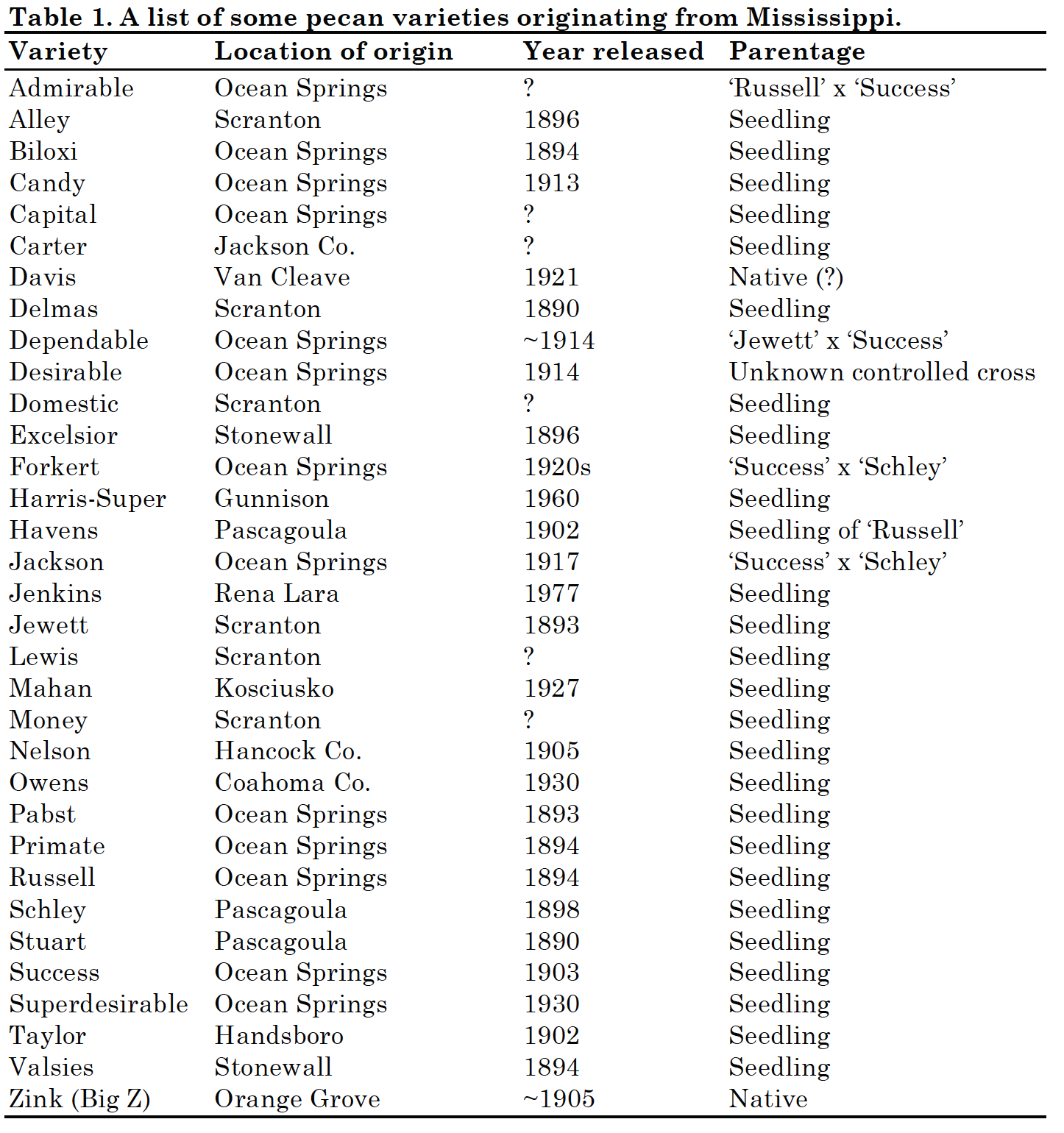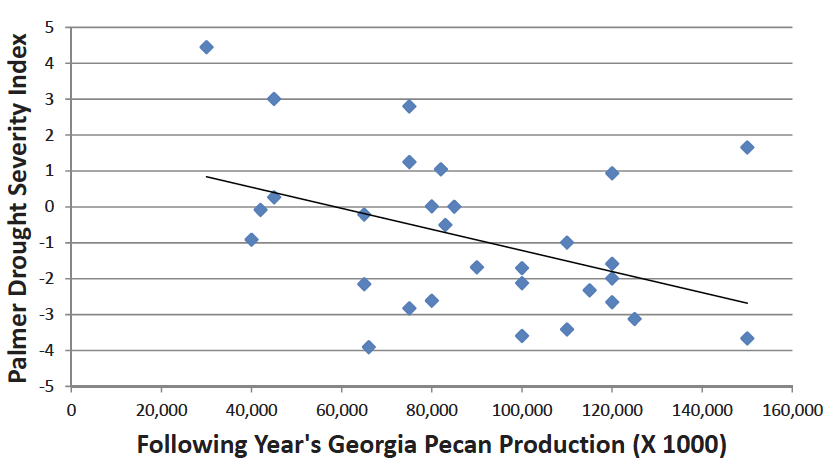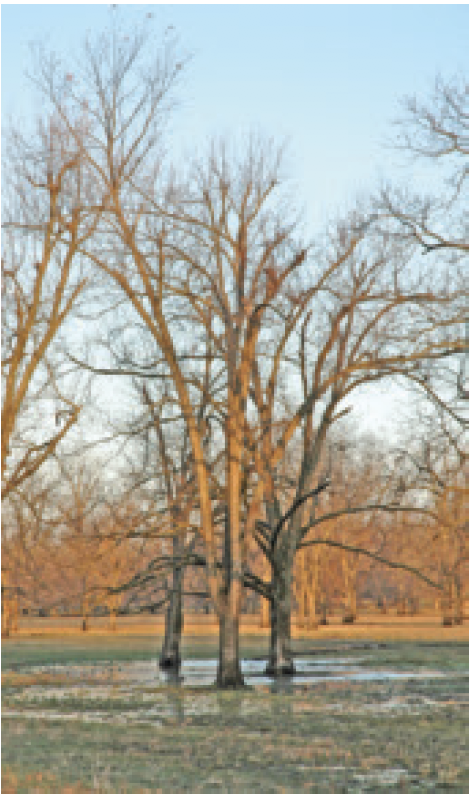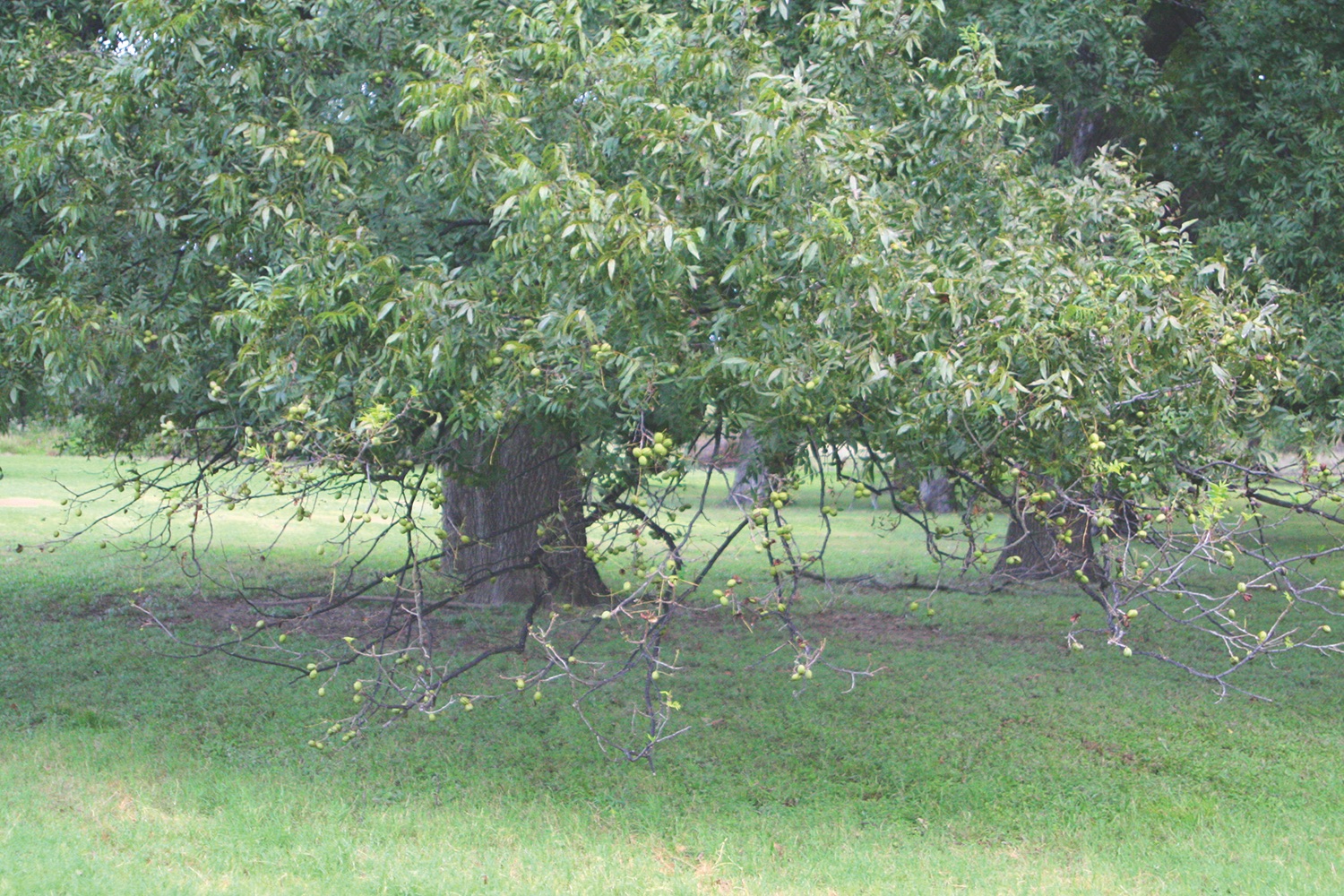Don’t Call it a Comeback…

The last time I wrote an article I was in Oklahoma. Since then I have moved to Mississippi State University. My position is similar, but some change in crops of major interest. Pecan growers, however, were one of the first groups to latch onto me. You see, just like everyone else in the U.S. the…
Read MoreGreat start demands work
The 2012 Texas pecan flowering looks great. Most trees native and improved have a strong flower crop. Budbreak and flowering look to be 10 to 14 days ahead of normal. There has also been the earliest ever emergence of pecan nut casebearer (PNC). At least three things contribute to our big crop; the 2010 “off”…
Read MoreLouisiana Industry loses Patriarch Bob Williams

Louisiana pecan industry patriarch Bob Williams passed away at his home on Thursday, March 29 at the age of 94. His bedroom window overlooked his beautiful home place orchard in Tensas Parish that he and Miss Clarice bought 65 years earlier in March 1947. Mr. Bob was the last of 10 children and was born…
Read MoreCold Storage Pecans Total 240 Million Pounds
Pecans in cold storage totaled 240.5 million pounds, inshell basis, as of March 31, according to USDA’s most recent cold storage report. That number compares to 201 million pounds, inshell basis, for the same date a year ago. A month earlier, Feb. 29, 2012, cold storage pecan stocks had been 227 million pounds, inshell basis….
Read MoreStudy evaluates Bird Gard system for controlling birds
For pecan growers Danny Tingle and Jarred Allred, the sounds of birds squawking in their trees means more money in their pockets, more of their nuts are making it to processing, and less are ending up as expensive bird feed. This past harvest, the 2 growers from southeastern Arizona took part in a research trial…
Read MoreWhat does the 2011 drought mean for the 2012 crop?

Most of the pecan belt saw extreme to severe drought conditions throughout much of the 2011 growing season. Although here in the Southeast, we saw nothing like the conditions parts of Texas suffered, but we are still extremely dry. Many wells around the region went dry last year and current groundwater levels across the southern…
Read MorePecan Grafting and Varieties
The new Texas A&M pecan planting will be in the fourth leaf this spring and we will begin grafting in early April. Our plan is to use the Texas Method Inlay Bark Graft on the trees with a trunk diameter larger than 2 inches and the Four Flap (Banana Graft) Graft on all the smaller…
Read MoreCentral Texas Growers Deal with Drought Aftermath
Growers in Comanche County, Texas gathered at the end of February for a drought program put on by the AgriLife Extension office. Charles Rohla from the Noble Foundation spoke about recovering from the drought as well as the future of the industry. Bill Ree spoke about any insect-related problems to expect this year and those…
Read MoreUSDA’s pecan crop estimate increases 20 million pounds
USDA’s 2011 pecan crop preliminary summary was released on March 15 and reflects a 20-million- pound increase over its previous crop estimate published in October. This summary report, which includes prices, has been published in January in the past. The report was initially going to be discontinued by USDA but the agency reconsidered and will…
Read MoreWorking on Field Drainage

Last summer’s searing heat and bone dry conditions are still fresh in the minds of native pecan growers from Texas up through Kansas. However, it will not stay dry forever. The rains will return and we’ll soon be talking about cleaning up after a flood in the pecan grove. The fact is we can do…
Read MoreAnother year already?
Bud break on ‘Desirable’ occurred in South Georgia on March 10, a record for earliness as far as I can find out. It has been the shortest winter season I can remember. We just shipped the last of the 2011 crop and we are starting on the new crop already. We are scrambling to get…
Read MorePheromone traps, websites are good PNC management tools
It is hard to believe that it is almost that time of year when producers across Texas and other states will need to start focusing their attention on a new season. Fortunately, a good portion of Texas has received significant winter rains so at least we are off to a good start, moisture-wise. Every year is different…
Read MorePurchase, plant or renovate?
Following 4 years of pecan prices going up to unprecedented levels, a lot of people are interested in getting into pecan farming. There are various ways to do this. One way, the fastest way, is to purchase a producing orchard that is already in good shape and producing profitably. The main trouble with this approach is…
Read MorePecan stress symptoms
Not all pecan trees are healthy. Many pecan orchards have trees experiencing stress symptoms and some have hidden or non-visible hunger signs. January and February are good times to evaluate tree health as one can observe dormant shoots throughout the tree. The best way is to look at shoot length in the top of the…
Read MoreAssess your pest management, prepare for new season
It is sure hard to believe that by the time this issue of Pecan South hits the street, a new season will be just over the horizon. In this short period between the end of harvest and the startup of a new year, there are several items that can be discussed. Last year, with the exception…
Read MoreFor natives, wait for nitrogen application; be ready with zinc
Even though we have turned the page on a new year, the sting of the 2011 cropping season lingers. For many in Texas, 2011 was their worst year ever. Still, parts of the state enjoyed a favorable native and improved pecan crop. Native pecans produced in 2011 were for the most part quite small due…
Read MoreWhat to expect from your trees after a severe drought

With the 2011 pecan harvest in our rearview mirror, some of you probably had a little extra time to enjoy working on a puzzle. Some like jigsaw puzzles. Sudoku is pretty popular, but it’s tough to beat just like a good old-fashioned crossword puzzle. So, for you puzzle enthusiasts, what is a 7-letter word for…
Read MorePecan Aphids: Part 2 – tools for managing pesticide resistance
This is the second of a 2-part series on pecan aphids and insecticide resistance. In last month’s Pecan South, we published Part 1 of this article that focused on data from 2011 Texas laboratory and field insecticide tests that looked at possible imidacloprid resistance in Texas were presented while this month’s column will focus on resistance…
Read MoreRapid orchard development practices
The pecan market in 2011 was exciting for those who had pecans to sell. Wholesale prices of $5 to $6 per kernel percentage point are comparable to what pecan retail prices were as recently as 2 or 3 years ago. This dramatic upward swing in pecan prices is a danger sign for some folks, yet…
Read More60-day countdown
It is early February and depending on your location you have approximately 60 days until budbreak. By the time you read this you should be deep into those off-season projects for improving and maintaining a good orchard. Skips replanted, drainage improved, pruning and/or hedging well underway, sprayers undergoing maintenance for this summer, soil samples taken,…
Read More2012 Pecan Calendar for Texas
As pecan growers enter the 2012 pecan year, it is good to outline management practices that may need to be used and develop plans. The 2011 pecan prices were the highest ever paid and growers are excited about the future. The 2011 year was terrible for Texas growers, but good prices helped ease the pain….
Read MoreCropland 18% of U.S. total
The USDA Economic Research Service recently reported, “The United States has a total land area of nearly 2.3 billion acres. In 2007, the major land uses were forestland at 30%; grassland pasture and rangeland at 27%; cropland 18%; special uses (primarily parks and wildlife areas) 14%; miscellaneous uses (like tundra or swamps) 9%; and urban…
Read MorePecan Investments
For the first time in 120 years, pecans are priced high enough for consideration as a sound investment. Interest in pecan orchards is at an all-time high. From the mid-1960s until the late 1990s, investors purchased pecan orchards because of great IRS tax advantages. One could purchase a bearing orchard, then use tax credits and…
Read MoreTime Marches On
I have just finished reading the first column I wrote for Pecan South. That was March of 2005, 7 years ago. It is interesting to see what has run true with what I wrote and what I was dead wrong about. Sometimes one has to study history to learn what not to do in the future…
Read More